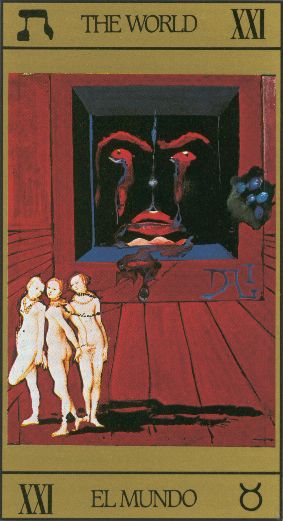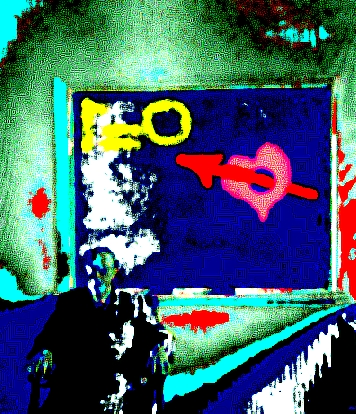Science Needs a Fuzz 2
by teti : freezotic@yahoo.com : April 2002
"Teti Matrix Theory"
The first three Operators {+, *, ^} together form the obvious First Teti Matrix with Family Name: 1.3T1M2.3
In essence 1.3T1M2.3 displays the distributive properties of addition, multiplication and the usual powers. We know the upper part of it as the Pascal triangle and the lower part as Newton's negative binomial.
- The general form (reminiscent of the unit circle) for this Teti Matrix is:
- III - II - I
- - IV - V -
- And subsequent Teti Matrixes must be spiraling onwards 'Tetigonometrically' out of this one!
- 1.3T1M2.3 fixes for all (a,b): O3(O1(a,b),n)=(a+b)^n the terms:
- t=[m,p,q]=O2(m,O2(O3(a,p),(O3(b,q))))=m*(a^p)*(b^q)
- thus creating an n-th row of terms t, and to this terms O1(t,t') is repeatedly applied: a summation.
We find that O1(p,q)=n, so this matrix n-th row terms are uniquely expressed as T=[m,q] where m is the binomial coefficient: n!*(q!*(n-q)!)^-1
This all put in Teti Family's QFO-notation: - Q1F=Q1[(n!*(q!*(n-q)!)^-1)*a^(n-q)*b^q]
- These equations returned to their roots may appear far-fetched and tiresome, but it is a popular mathematical technique, the implication of the distributive axiom for addition and multiplication, and known as the binomial series. It ties + * ^ together, nothing special.
QFO uses a deeper approach though: a Qc series has no beginning and no end, and if the Teti Matrix looks very binomial it is due to zero factors in QF; but zeros are no longer what they seem...
The Matrix
Distributive law and (a+b)n equals a sum of terms: an-qbqm or matrix row entries: [m,q]
What do the terms inside its building blocks stand for?
And how can we interpret the geometry of a Teti Matrix?
We'll define din#q as a (q-1)th dimension relation, so that:
- din#4 is a third dimension relation of four points in a space
- din#3 is a connection between three points on a plane: a triangle
- din#2 is two points connected with what we call a line
- din#1 is a point in itself
- din#0 is the void relation Ø empty of anything
- leaving din#-1 for later definition
The rows of the Teti Matrix are conventionally numbered n. Each row n describes the interconnectivity for n number of points: showing their maximum m of din#q type relations.
For example: between 6 points there are 15 lines and 20 triangles that you can draw, etc.
We have in all rows: p+q=n, so if q=0 then p=n, then we get m=1 time a void Ø.
For each [m,q], m counts the number of din#q between n arbitrary points.
In rows n>0, [m,q] counts an m number of din#q type relations between n points.
In rows n<0, we are looking at the [m,q] properties of negative point multidimensionality!
1.3T1M2.3 looks like a hexagon, if we consider just the +/- signs of n, p and q. Teti thinks its areas form 3 Quadrants: I,IV,V and 2 Triangles: II,III
- Identity Zero Quadrant (x+0=x)
- Pascal's original Triangle on regular connections between points
- Cancellation Zero Triangle (-1+1=0')
- Newton's Quadrant on infinite relations between anti-points
- Zero Complex Quadrant
In the future I will draw this matrix a little differently, you can watch it now with each area in a seperate colour at the old matrix drawing.
But maybe you'll want to forget the exact figures and go straight for the geometrical interpretation of this all too familiar matrix (which I did not complete anyhow).
- For better or for worse, here follow Teti's Geometrical Muses
on the Strange Dimensionality of the matrix' submerged half,
where it seems Oceanic Beings can choose
to be or not to be ...
>>>>> "Will you walk out of the Air, my Lord?" >>>>>
Obviously an anti-point or negative point is not a point but an infinite geometrical expansion with peculiar properties or aspects in each dimension that it passes through. Hopping over any odd din#q, but landing with a splash in the even ones, these things alternatively exist and non-exist, and so they oscillate between being, nothingness and infinity.
We'll want to use zero complex numbers to tame dimension vibrations (and make it all visible). How?
- Most arguments against zero division somewhere use (bad habits?) an improper reduction of a/a to 1, which simply does not hold in case of a=0. You must leave the 0/0 as an unknown quantity, a line without specific points, a number line without fixed numbers, and treat it like an open possibility or new axiom:
- 0*(0/0)=0, 0/0=0^(-1+1).
- From 1+0=1 follows that 0*0 may be deeper zero than 0, and inverses lead to other zeros (Should I say such things? I'm still trying to understand if 0'=-1+1 equals -0=-1*0 or not).
Back to business: The primary line-aspect of a negative point can be understood as the line given by 0/0, that skips the zero (in its sense of identity element for addition), and that stops at either end of the normal number sequence. A single secondary line can run simultaneously from the zero spot and the two points at negative and positive infinity, to tie all the ends directly together between different anti-points (when n<-1). I guess the three points where the primary line of a negative point breaks are in fact not three but all one.
Please verify this procedure! You can see the total number m of possible lines din#2 connecting a group of n negative points is given in each entry [m,2] in the area called 'Newton Quadrant' of the Teti Matrix.
Told you it was hazardous reading! I still like to be working hard to improve these problems for the next infinity, but now I must take a nap, thank you.
Thank you for all your email reactions at freezotic@yahoo.com for the teti maths pages: clues, corrections, references, deep thought, applause, all is welcome. Please tell me how you would do it, and show the world is infinitely interesting for the both of us. Terrestrial and Extra Terrestrial Intelligence alike, we are in it for free!
Goodbye for now, stay in touch, and thank you for reading computer eyes...
There is no:

Tarot Universal
Salvador Dalí
'the three maidens andthe bleeding face of everything'
